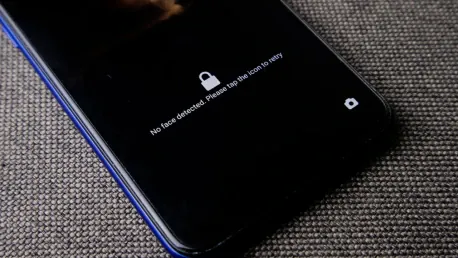The COVID-19 pandemic has significantly altered the landscape of the Mobile Security market. As remote work and digital communication became the norm, the demand for robust mobile security solutions surged. This article delves into the current state of the Mobile Security market, its future projections, and the key factors driving its evolution post-COVID-19.
Surge in Demand for Mobile Security Solutions
Remote Work and Digital Communication
The pandemic forced many businesses to adopt remote work policies, leading to an increased reliance on mobile devices for communication and operations. This shift has heightened the need for secure mobile environments to protect sensitive information from cyber threats. Companies are now investing heavily in mobile security solutions to safeguard their data and ensure business continuity. The reliance on mobile devices for accessing corporate networks and data has made it imperative for organizations to implement stringent security measures. This surge in demand is driven by the necessity to protect sensitive corporate and personal data from potential breaches and unauthorized access.
Moreover, as digital communication tools become more pervasive in everyday work life, the risks associated with data transfer and storage on mobile platforms have become a focal point for security professionals. Enhanced mobile security measures are not just a precaution but a requirement to mitigate risks such as phishing attacks, malware, and other cyber threats. Businesses are also increasingly dependent on secure mobile communication platforms to ensure confidentiality and integrity in their communication. The necessity for robust encryption and secure communication channels is now more pressing than ever.
Increased Cyber Threats
With the rise in remote work, cyber threats have become more sophisticated and frequent. Hackers are exploiting vulnerabilities in mobile devices, making robust security measures essential. The Mobile Security market is evolving to address these challenges by developing advanced solutions that can detect and mitigate threats in real-time. The increased frequency and complexity of cyber-attacks necessitate that mobile security solutions stay ahead of potential threats by adopting proactive security measures. This ongoing evolution in threat landscapes has accelerated the need for innovative mobile security technologies.
The variety of cyber-attacks targeting mobile devices has expanded to include sophisticated methods such as zero-day vulnerabilities and advanced persistent threats. This has compelled mobile security markets to continually innovate and adapt to safeguard users against these evolving threats. Real-time threat detection and response mechanisms have become critical components of mobile security strategies. The dynamic nature of these threats demands that mobile security solutions be agile and highly effective in neutralizing attacks as they occur. Consequently, security firms are leveraging artificial intelligence and machine learning to enhance their threat detection and mitigation capabilities.
Key Market Players and Their Strategies
Innovations and Product Offerings
Leading companies like IBM, VMware, Symantec, and Apple are at the forefront of the Mobile Security market. These players are continuously innovating to stay ahead of cyber threats. They are introducing new products and features that enhance mobile security, such as advanced encryption, biometric authentication, and AI-driven threat detection. These innovations not only address current security challenges but also anticipate future threats, ensuring that their products remain relevant and effective. The competitive nature of the market drives continuous improvement and innovation, leading to the development of highly sophisticated security solutions.
A significant focus for these companies is on integrating AI and machine learning into their security offerings. These technologies enable more accurate threat detection and response by learning from past security incidents and adapting to new threats. Biometric authentication solutions, such as fingerprint and facial recognition, are also becoming more robust, providing an additional layer of security for mobile devices. Advanced encryption techniques further ensure that data remains secure even if a device is compromised. The collaboration between leading tech firms and cybersecurity experts fosters an environment of continuous improvement, thereby elevating the standards of mobile security solutions.
Competitive Landscape
The competitive landscape of the Mobile Security market is dynamic, with key players vying for market share. Companies are adopting various strategies, including mergers and acquisitions, partnerships, and collaborations, to strengthen their market position. These strategic moves are aimed at expanding their product portfolios and reaching a broader customer base. By leveraging synergies through collaborations and acquisitions, companies can integrate complementary technologies into their offerings, resulting in more comprehensive security solutions. This competitive environment spurs innovation and drives the overall growth of the mobile security market.
Mergers and acquisitions allow companies to quickly scale their capabilities and gain access to new markets. Strategic partnerships, on the other hand, enable the sharing of knowledge and resources, leading to the development of innovative solutions. These alliances often result in the creation of security ecosystems where multiple technologies work together seamlessly to provide holistic protection. Additionally, competitive dynamics push companies to invest heavily in research and development to stay ahead of their rivals. The continuous pursuit of innovation and market leadership benefits consumers as they have access to advanced and effective mobile security solutions.
Market Segmentation and Applications
Solutions and Services
The Mobile Security market is segmented into solutions and services. Solutions include Mobile Identity Management and Mobile Data, while services encompass Implementation, Training, and Support. Each segment plays a crucial role in providing comprehensive security to mobile devices and networks. Mobile Identity Management solutions focus on verifying and managing user identities to prevent unauthorized access, while Mobile Data solutions protect the data stored and transmitted by mobile devices. Both are essential in creating a secure mobile environment that supports business operations and protects sensitive information.
Implementation services ensure that security solutions are correctly integrated into existing systems, maximizing their effectiveness. Training services equip users with the knowledge to manage and respond to security threats, fostering a culture of security awareness within organizations. Support services provide ongoing assistance to address any issues that may arise, ensuring that security measures remain effective over time. The comprehensive approach of combining solutions and services creates a robust security framework that addresses every aspect of mobile security, from identity management to data protection and user education.
Sector-Specific Applications
Mobile security solutions are being deployed across various sectors, including Medical, Communication, Retail, Energy & Utilities, Travel & Hotel, Education, Manufacturing, and Aerospace and Defense. Each sector has unique security requirements and challenges, which are being addressed through tailored solutions. In the medical sector, for instance, protecting patient data and maintaining confidentiality is paramount. Mobile security solutions in this field focus on securing electronic health records and ensuring compliance with regulations such as HIPAA. Similarly, in the retail sector, protecting customer data and payment information is a primary concern, necessitating robust encryption and secure transaction processing.
In the Energy & Utilities sector, securing critical infrastructure against cyber threats is essential to ensure uninterrupted service delivery. Mobile security solutions here focus on protecting remote monitoring and control systems. The travel and hospitality industry requires solutions that secure customer data and support mobile booking and payment systems. Educational institutions need to protect student data and ensure secure access to online learning platforms. In the Manufacturing and Aerospace & Defense sectors, protecting intellectual property and safeguarding communication channels are critical. Tailored mobile security solutions for each industry ensure that specific security challenges are effectively addressed.
Geographic Distribution and Regional Dynamics
North America and Europe
North America and Europe are leading regions in the Mobile Security market, driven by high adoption rates of advanced technologies and stringent regulatory frameworks. These regions are witnessing significant investments in mobile security solutions to combat the rising cyber threats. Stringent data protection regulations, such as GDPR in Europe and CCPA in California, necessitate robust security measures to ensure compliance. Companies in these regions are adopting advanced technologies and investing in innovative solutions to protect sensitive data and maintain regulatory compliance.
The presence of leading tech companies and cybersecurity firms in North America and Europe further drives the adoption of cutting-edge mobile security solutions. The competitive landscape in these regions fosters continuous innovation and improvement in security technologies. Additionally, high-profile cyber incidents have heightened awareness of the need for robust security measures, leading to increased investments in mobile security solutions. The emphasis on regulatory compliance and data protection in these regions creates a secure environment that promotes trust and confidence among consumers and businesses alike.
Asia-Pacific and Emerging Markets
The Asia-Pacific region, including China, Japan, Southeast Asia, and India, is experiencing rapid growth in the Mobile Security market. The increasing penetration of smartphones and the growing awareness of cyber threats are driving the demand for mobile security solutions in these regions. Emerging markets are also showing potential for growth as they adopt digital technologies. The rapid digitization and increased use of mobile devices in these regions present significant opportunities for mobile security firms to expand their market presence. Governments in these regions are also increasingly focusing on cybersecurity, further driving the demand for mobile security solutions.
In China and India, the proliferation of mobile payments and e-commerce has underscored the need for robust mobile security measures. The growing middle class in these regions is also driving the adoption of smartphones and associated security solutions. In Southeast Asia, the government’s efforts to promote digital transformation and enhance cybersecurity frameworks are creating a conducive environment for the growth of the mobile security market. The increasing awareness of cyber threats among businesses and consumers in these regions is leading to greater investments in mobile security solutions to protect sensitive data and ensure secure digital transactions.
Future Trends and Growth Projections
Technological Advancements
The Mobile Security market is poised for significant growth, driven by technological advancements such as AI, machine learning, and blockchain. These technologies are enhancing the capabilities of mobile security solutions, making them more effective in detecting and preventing cyber threats. AI and machine learning enable the development of predictive security models that can identify potential threats before they materialize. Blockchain technology, with its immutable and transparent nature, provides a secure framework for managing and verifying digital transactions. These technological advancements are transforming the mobile security landscape, making it more resilient to evolving cyber threats.
In addition to AI, machine learning, and blockchain, other emerging technologies such as 5G and the Internet of Things (IoT) are also influencing the Mobile Security market. The deployment of 5G networks is expected to increase the number of connected devices, further emphasizing the need for robust mobile security solutions. IoT devices, which are often less secure, present new challenges and opportunities for mobile security firms. By leveraging advanced technologies, mobile security solutions can provide comprehensive protection across a wide range of devices and network environments.
Investment and Innovation
The forecast period up to 2029 is expected to witness substantial investments in Mobile Security technologies and services. Companies are focusing on innovation to develop cutting-edge solutions that can address the evolving security needs of businesses and individuals. Increased investment in research and development is driving the creation of more effective and sophisticated security solutions. This focus on innovation is essential to staying ahead of cyber threats and maintaining a competitive edge in the dynamic Mobile Security market.
As the market continues to grow, we can expect to see increased collaboration between technology firms, cybersecurity companies, and research institutions. These collaborations will drive innovation and result in the development of comprehensive security solutions that address a wide range of threats. The strategic initiatives and investments made by key market players will shape the future of the Mobile Security market, driving advancements in security technologies and enhancing overall market resilience. As businesses and individuals continue to adopt digital technologies, the demand for innovative and effective mobile security solutions will only grow.
Marketing Strategies and Financial Indicators
Branding and Product Innovation
Key market players are employing effective marketing strategies and branding techniques to maintain a competitive edge. Product innovation is critical in addressing the changing needs of consumers and businesses. Successful case studies of these strategies provide valuable insights for new entrants and existing players. A well-executed marketing strategy can differentiate a company from its competitors and create a strong brand identity. By focusing on product innovation, companies can meet the evolving security needs and preferences of their target market.
Branding efforts often involve highlighting the unique features and benefits of security products, emphasizing their effectiveness in mitigating cyber threats. Companies also focus on building trust and credibility through transparent communication and customer engagement. Effective branding and marketing strategies not only attract new customers but also foster long-term relationships with existing ones. By continually innovating and adapting their products to meet changing security demands, market players can maintain their competitive advantage and drive growth in the Mobile Security market.
Economic Analysis
The Mobile Security market is poised for significant growth post-COVID-19, driven by the rise in remote work and increased cyber threats. Companies must prioritize robust security measures to protect sensitive data, creating a burgeoning market for advanced mobile security tools and technologies. Understanding these dynamics is crucial for staying ahead in an era where digital interactions dominate many aspects of work and personal life.









